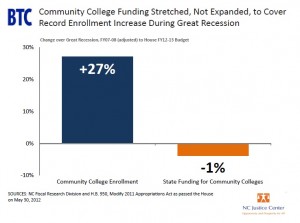11.06.2012
Policy Points
From the Federal Reserve Bank of Richmond’s latest survey of manufacturing activity in the South Atlantic (District of Columbia, Maryland, North Carolina, South Carolina, Virginia and West Virginia):
Manufacturing activity in the central Atlantic region expanded in May for the sixth consecutive month but at a more moderate pace than a month ago, according to the Richmond Fed’s latest survey. Looking at the main components of activity, shipments held steady and employment grew at a faster rate, while new orders grew at a rate well below April’s pace. Most other indicators also suggested a slowdown in growth. District contacts reported that backlogs turned negative and capacity utilization grew more slowly. Vendor lead-time grew at a slower rate, while raw materials inventories grew at a quicker pace.
…
In spite of the recent moderation in activity, assessments for business activity over the next six months remained generally positive since our last report. Contacts at more firms anticipated that shipments, new orders, backlogs, capacity utilization, and capital expenditures would continue to grow at a solid pace.
01.06.2012
News Releases, Policy Points
CHAPEL HILL (June 1, 2012) – The national labor market experienced few changes in May, as employers added just 69,000 more payroll positions than they eliminated. Furthermore, the unemployment rate essentially held steady at 8.2 percent. Although the national labor market started 2012 on a positive note, growth has slowed over the course of the year.
“May marked the 20th consecutive month of job growth in the United States,” said John Quinterno, a principal with South by North Strategies, Ltd., a research firm specializing in economic and social policy. “Over the past three months, the economy has netted an average of 96,300 jobs per month, a pace that, while positive, is well below the average pace of job growth recorded during the prior three-month period. The current rate of growth simply is insufficient to drive unemployment down to normal levels anytime soon.”
In May, the nation’s employers added 69,000 more payroll positions than they cut. Gains occurred entirely in the private sector (+82,000), while government payrolls fell by 13,000 positions. Additionally, the payroll employment numbers for March and April underwent negative revisions; with the updates, the economy gained 220,000 jobs over those two months, not the 269,000 positions previously reported.
Payroll levels in most major private-sector industry groups grew or held steady in May. Trade, transportation, and utilities netted the most positions (+54,000, with 65.9 percent of the growth occurring in the transportation and warehousing subsector), followed by education and health services (+46,000, with the health care subsector responsible for 71.3 percent of the net gain). Meanwhile, construction shed the most positions (-28,000 positions, with specialty trade contractors accounting for 63.2 percent of the losses.)
“The American economy has added jobs steadily for almost two years and has netted 823,000 positions so far in 2012,” noted Quinterno. “The current average rate of job growth—164,600 positions per month—nevertheless is insufficient to close the large jobs gap facing the United States.”
Weak employment conditions were evident in the May household survey. Last month, 12.7 million Americans (8.2 percent of the labor force) were jobless and seeking work. The number of unemployed Americans and the unemployment rate basically held steady last month. Meanwhile, the size of the labor force increased by 642,000 persons, and the share of the population participating in the labor force rose to 63.8 percent. Yet despite a modest increase (to 58.6 percent), the share of the adult population with a job remained at a depressed level.
Last month, the unemployment rate was higher among adult male workers than female ones (7.8 percent versus 7.4 percent). Unemployment rates were higher among Black (13.6 percent) and Hispanic workers (11 percent) than among White ones (7.4 percent). The unemployment rate among teenagers was 24.6 percent. Moreover, 7.8 percent of all veterans were unemployed; the rate among recent veterans (served after September 2001) was 12.7 percent.
Jobs remained scarce in May. Last month, the underemployment rate equaled 14.8 percent. Among unemployed workers, 42.8 percent had been jobless for at least six months with the average spell of unemployment lasting for 39.7 weeks. The leading cause of unemployment remained a job loss or the completion of a temporary job, which was the reason cited by 55 percent of unemployed persons in May.
“While the American economy continued to add jobs in May, the labor market is not growing as rapidly as occurred earlier in the year,” observed Quinterno. “Whether this slowing is the product of softening economic conditions or mild winter weather that pulled hiring forward is a topic for analysis. The bottom line remains that American workers are attempting to navigate a labor market that is not adding jobs in the numbers needed to accommodate all those who want and need work.”


 Email Sign-Up
Email Sign-Up RSS Feed
RSS Feed